Geneva held no fascination for me. It was just another Swiss city with a pretty lake and exorbitant prices. But it offered one thing that other destinations in Switzerland could not: tours of CERN, the European Council for Nuclear Research, where scientists and physicists are studying the basic constituents of matter. For more than 50 years, they have been seeking answers to the questions, “What is the universe made of?” and “How did it start?”

I readily admit to being a science geek. I was only two years old when CERN was founded in 1954 and during my elementary school years, science textbooks spoke only of molecules, atoms, electrons, protons, and neutrons. But I’d followed developments in physics and read extensively about the subject over the years, so I knew significant advancements had been made in the field. Now I was beside myself with excitement at the prospect of touring the world’s most prestigious particle physics facility.
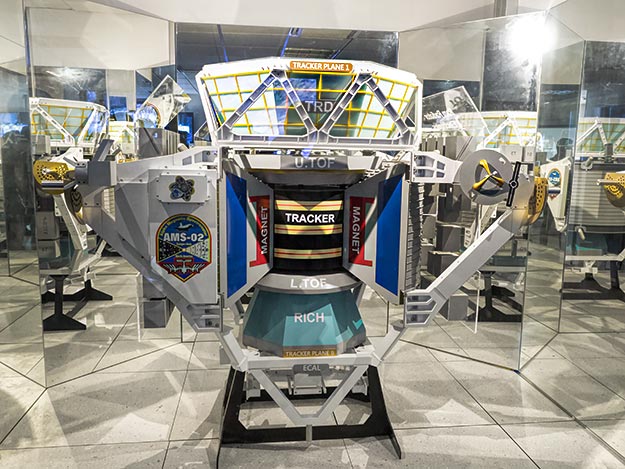
Those who are familiar with CERN often think of it in terms of the Large Hadron Collider, the world’s largest and most powerful particle accelerator. The LHC may be the best known part of CERN, but is only one element of it. The complex encompasses nine accelerators and seven different detectors, which are mounted at intervals along the LHC tunnel and conduct specific experiments. Additionally, experiments at other accelerators and facilities on-site and off remain an important part of the laboratory’s activities. The CLOUD experiment is investigating a possible link between cosmic rays and cloud formation, while the CAST experiment is looking for hypothetical particles coming from collisions on the sun. Even the International Space Station is being used to perform CERN experiments. A detector – the only one not located at CERN – has been deployed on an arm of the station to study particles and the composition of the Universe in preparation for colonizing Mars.
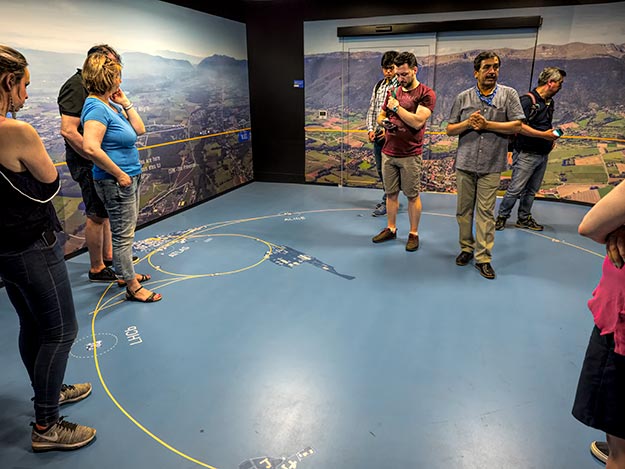
The roughly circular tunnel that houses the LHC stretches from the western suburbs of Geneva, Switzerland, to the Jura mountains of France. It is 16.77 miles in circumference and lies at an averages depth of 328 feet. The enormous size of the tunnel was necessary in order to accelerate proton beams to speeds that would force the protons to split into their elemental parts when they collide. Since the energy density and temperature of these collisions are similar to those that existed a few moments after the Big Bang, the LHC allows scientists to study conditions that were present at the formation of the Universe.
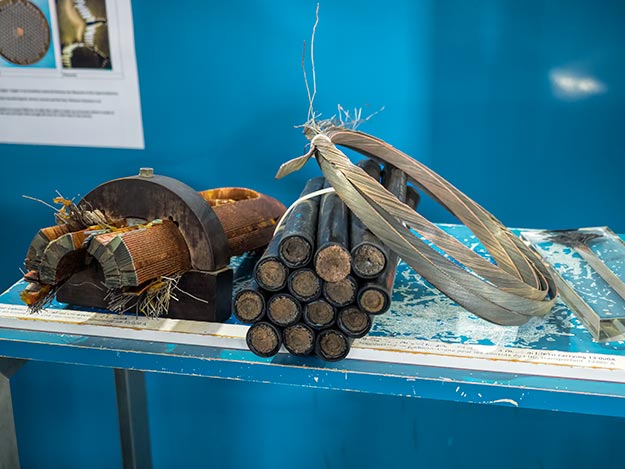
I had chosen to take a tour of the facility where the dipole magnets are checked and assembled, since the LHC would not be possible without them. The tour began with a lecture that acquainted us with the language of particle physics: electrons, quarks, leptons, gluons, neutrinos, Higgs boson particles, photons, and gluons. There was no mention of atoms, much less molecules. My head was swimming by the time we headed for the magnet facility.
Our guide led us to a section of the LHC tube, the top of which had been cut off to expose its innards. Using it as a visual aid, he explained the process in detail. First, electrons are stripped from hydrogen atoms to obtain protons. These protons are injected into a booster and two synchrotrons, each of which increase the speed of the proton beams before they are transferred to the Large Hadron Collider. Inside the LHC, half the protons are sent down a tube in clockwise direction, while the remainder are sent counter-clockwise in a parallel tube.

Protons have a positive charge, thus their natural tendency is to repel one another. This is where the super-cooled dipole magnets come into play. They align the beams vertically and horizontally and focus them into a beam that is one-third the thickness of a strand of hair. Unlike regular magnets, the ones used in the LHC cannot be made of copper. The number of windings required to produce the necessary energy would make the magnets too large, and the heat generated would be too much for the copper wires to bear. Instead, they are built of niobium-titanium, which becomes superconducting at a temperatures of -271 degrees Celsius. This extreme temperature is achieved by pumping super-fluid helium into the magnet systems. Once the magnets have stabilized the proton beams, experiments begin. At intervals during the circulation, the magnets bend the streams and force them to collide into one another head on.
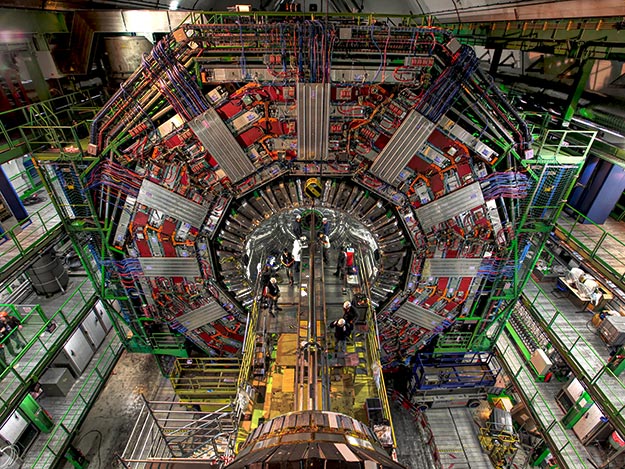
On July 6, 2017, ten days after my departure, CERN announced that experiments with the Large Hadron Collider had allowed them to observe a new particle containing two charm quarks and one up quark. Physicists had long theorized about this particle from the baryon family, but until recently had no definitive proof that it existed. According to their press release:
“Nearly all the matter that we see around us is made of baryons, which are common particles composed of three quarks, the best-known being protons and neutrons. But there are six types of existing quarks, and theoretically many different potential combinations could form other kinds of baryons. Baryons so far observed are all made of, at most, one heavy quark.”
Giovanni Passaleva, spokesperson for the LHC collaboration explains further. “Finding a doubly heavy-quark baryon is of great interest as it will provide a unique tool to further probe quantum chromodynamics, the theory that describes the strong interaction, one of the four fundamental forces. Such particles will thus help us improve the predictive power of our theories.”
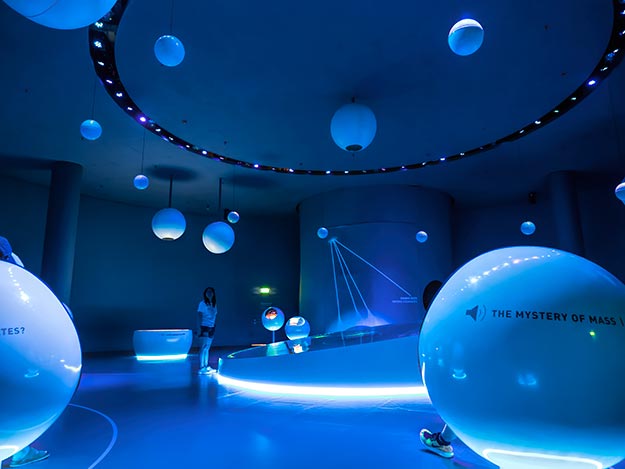
Is your head spinning yet? Passaleva is referring to the Grand Unified Theory or GUT, which studies the relationship between the electromagnetic, weak, and strong interactions and attempts to merge them into a single force. In theory, this would allow them to scientifically describe nature and understand the forces at work as far back as the Big Bang. But even the GUT would only be a piece of the puzzle. Physicists would still have to unify gravity with the other three interactions and develop a theory of everything (TOE).
Less than a month later, CERN reported the first observation of the “hyperfine structure of antihydrogen, the antimatter counterpart of hydrogen,” which “could help understand any differences between matter and antimatter.” My tour of CERN was five weeks ago and my head is still spinning. By the time I cycle off this planet, scientists probably won’t even be talking about atoms anymore.
Author’s note: You can take free tours of CERN throughout the year, however they fill up very fast, so it is best to book as far in advance as possible. For more information on tours, visit http://visit.cern/tours/guided-tours. Even if you are unable to book a tour, it is worthwhile to visit the permanent exhibitions, which need no reservations. The facility is easily reached by public trolley from the center of Geneva.
Check prices for accommodations in Geneva at Booking.com, Hotels.com, or HotelsCombined.com. Read reviews about hotels and guest houses in Geneva, Switzerland at TripAdvisor.
Disclosure: This article contains affiliate links to hotel booking sites. If you click on any of the links and make a booking, I may earn a small commission, which keeps this blog free to read.

This is the correct spelling of boson.
Thank you Ryan. I have made that correction.
I am often envious of your travels, but especially so of this! As you say at the beginning, Geneva is so expensive, but this might justify the expense!
Hi Linda: It was indeed eye-wateringly expensive, but worth every penny to visit CERN. If you go, be sure to book a press tour months in advance. The regular tours are booked a year out, and I can easily see why. Fascinating place.